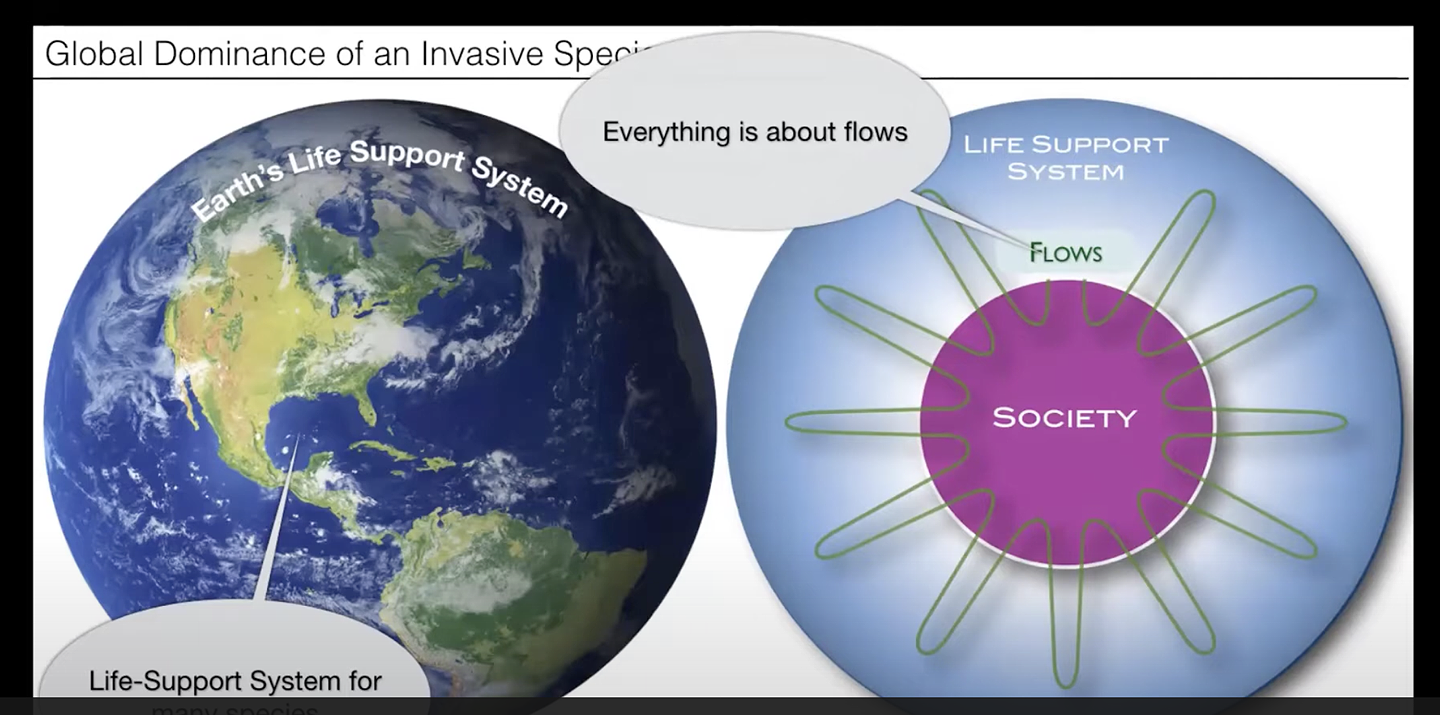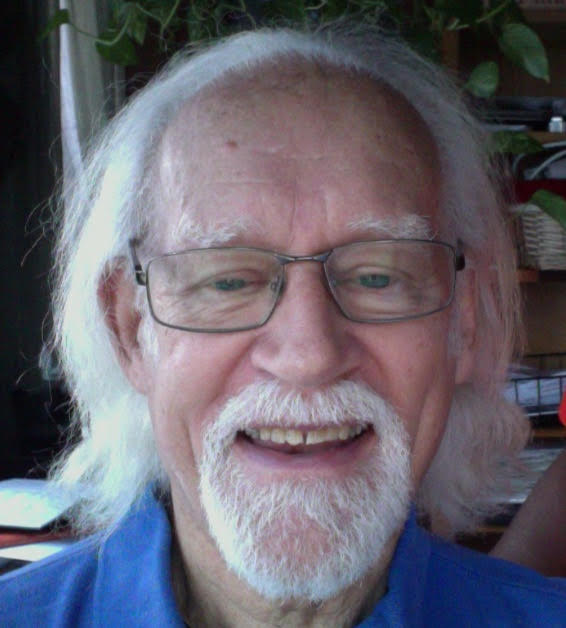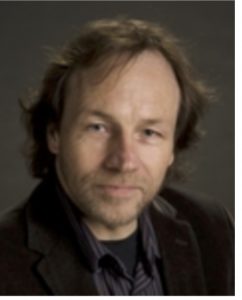
Riverine systems (also called watersheds or catchment basins) consist of interactions among geological features, plant and animal communities, water (precipitation, groundwater, lakes, wetlands, and flowing water), and human activities. These systems are both exceedingly complex and, when healthy, undergo essentially continuous transformations.
Riverine systems provide a number of critical services for humanity, including clean water and air and biodiversity. Earth Viability Center is a non-profit whose mission is to provide monitoring data for the world’s riverine systems. Our approach is based on Stafford Beer’s work. Specifically, we are developing seven key indicators (essential variables) which will be presented as time series. Each indicator will be a ratio between riverine system health and the actual state.
Because riverine systems are complex and in a state of constant flux, defining system health and selection of essential variables poses a number of issues. My webinair will discuss these issues and our progress to date.
Speaker Bio

Dr. Barry Clemson: Bio
Stafford Beer was my most important intellectual mentor. I discovered Stafford during my MA (1967) and spent one whole year doing little other than studying Stafford and Ross Ashby. I then became very active in both the systems theory and the cybernetics societies (and served as president of the American Society for Cybernetics for two years).
Education
BA in Science, MA in Political Science, PD in Organization Theory (all from Penn State U), Theological study with the Ecumenical Institute for three years
Key Experiences
Community Development / Activism (Mississippi Freedom Summer, Chicago, India, Anti-war)
- Technician in custom manufacturing
- Software development focusing on automated tools
- University teaching and research (Colleges of Education and an Engineering School)
- Construction company (owner, carpenter, tree monkey)
- Black belt in Aikido
Current Projects
- Administrator for a small community church
- Planning and design for a viable post collapse village in Alaska, with a focus on a library of how to do things
- Earth Viability Center: Monitoring the health of the riverine systems worldwide as a tactic to hopefully help in healing our planet
Key Publications
- Cybernetics. 1986.An introduction to Stafford Beers works. Published prior to syntegration. Includes a chapter on laws of cybernetics co-authored with Allenna Leonard
- Denmark Rising. 2009. A novel that imagines 1940 Denmark understood what we now know about strategic nonviolence and that Denmark used that for a campaign of total resistance to the Nazis. The common reaction of readers is “I didn’t realize that nonviolence could be so effective against a Hitler”.

Dr. Hans-Peter Plag – Bio
After some years as carpenter, Hans-Peter Plag studied mathematics and geophysics in Berlin and obtained his PhD in Natural Sciences in 1988 from the Free University of Berlin. From 1988 to 1997 he was head of a research group in geodynamics at the University of Kiel, Germany. During that time, he was also active in environmental movements and later a member of the Green Party. Among others, he was the lead author of a concept for waste reduction and recycling, which contributed to a significant reduction in waste and an increase in recycling. In his teaching, he introduced the students to the concept of sustainability and challenged them with the question of how Earth sciences can contribute to a successful quest for a sustainable development. In 1995, he worked for five months at the Proudman Oceanographic Laboratory, Bidston, United Kingdom. From 1997 to 2004 he was the head of the department “Global reference” at the Geodetic Institute of the Norwegian Mapping Authority in Norway, where he also was professor (mathematical models in geodesy) at the University of Oslo. From 2004 to 2012, he was a research professor at the University of Nevada, Reno, and affiliated with the Nevada Geodetic Laboratory and the Nevada Seismological Laboratory. From 2010 to 2016, he was a Visiting Professor at the Stevens Institute of Technology, Hoboken, NJ, USA. From 2012 to 2013, he held the Chair on Global Change and Sustainability and was the Director of the Global Change and Sustainability Research Institute (GCSRI), University of the Witwatersrand, Johannesburg, South Africa. In June 2013, he joined ODU as the Co-Director of the Climate Change and Sea Level Rise Initiative and Professor in the Department of Ocean, Earth and Atmospheric Science. Since March 2014, he is the founding Director of the Mitigation and Adaptation Research Institute (MARI) at ODU.
His main fields of expertise are in sustainability, global and climate change, local to global sea level changes, Earth system dynamics, solid Earth geophysics, the rheology of the Earth’s mantle and continuum mechanics, deformation of the solid Earth, space geodesy and geodetic reference frames. He has provided scientific advise to private companies and governmental committees, particularly with respect to future sea level rise. Between 1990 and 2010, he was engaged in utilizing space-geodetic observations for Earth system research, and he was vice-president of the Global Geodetic Observing System (GGOS) from 2003 to 2008. From 1999 to 2002, he was the President of a European COST action that resulted in the establishment of the European Sea Level Service, which he chaired until 2004. From 2002 to 2004, he was Vice-President of a European COST Action on the use of Global Satellite Navigation Systems (GNSS) for improved forecasts of extreme weather events.
Current main professional activities are related to the Group on Earth Observations (GEO), which is implementing the Global Earth Observation System of Systems (GEOSS). He is representing IEEE as a Participatory Organization in GEO. He engages in assessments of global catastropic and Anthropocene risks, including those related to plastics, land use, extinction, and modern climate change and sea level rise. His educational efforts focus on sustainability leadership, and he has been leading the development of an undergraduate and graduate program utilizing case studies in sustainability to create a real-world learning experience for students. He is on the Board of iCREST education initiative of the ICES Foundation. In his career, he has led more than fifteen large international projects, chaired international programs and committees, organized numerous international workshops and conferences, often as chair of the program and/or organizing committees, edited many special issues and proceedings, and coordinated and edited two international and interdisciplinary community reports with up to 40 participating authors. Since 1994, he is a member of the Editorial Board of the Journal of Geodynamics and since 1996 Editor-in-Chief for geodesy of Physics and Chemistry of the Earth. Since 2013, he is publishing the column “On the Edge” in ApogeoSpatial, where he comments, among others, on issues of global change, unsustainability, and global risk governance.
